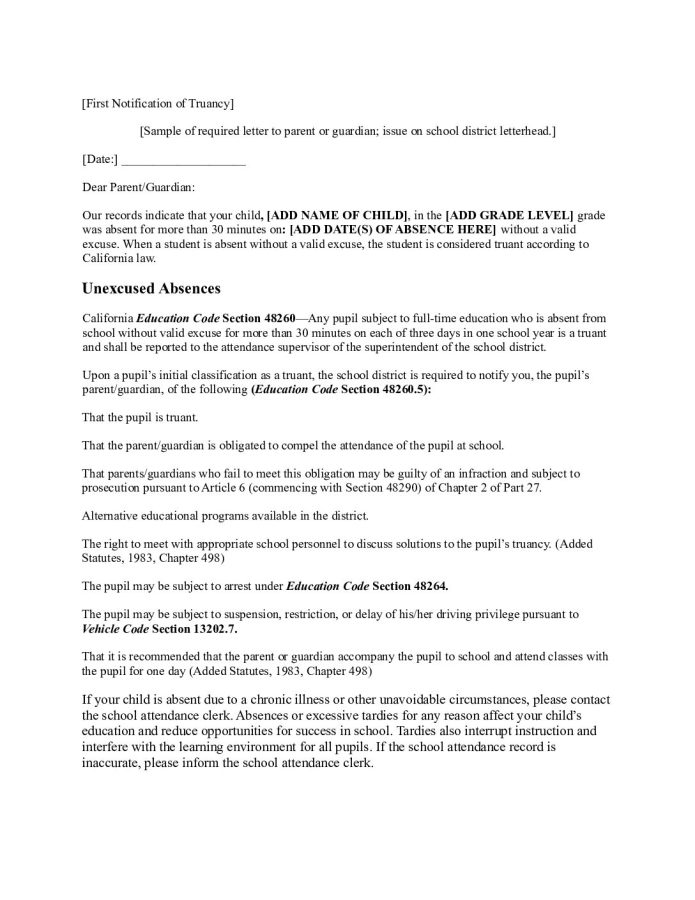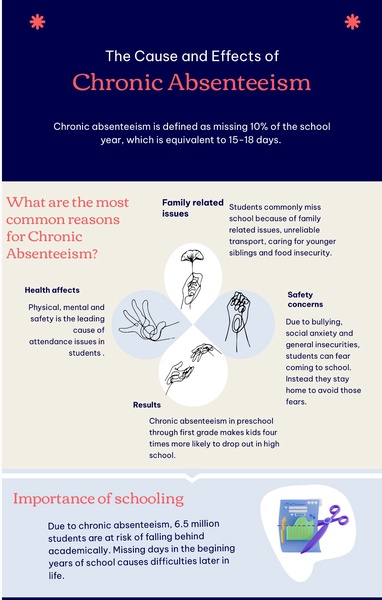Your donation will support the student journalists of Buena High School. Your contribution will allow us to purchase equipment and cover our annual website hosting costs.
Chronic Absenteeism is not Truancy, needs to be reevaluated
January 3, 2023
Truancy letters are sent out to guardians and parents when their child have missed a certain number of days. The letter describes the consquences missing days of school can have on the child’s education and the actions that can be taken against the parent.
The public education system has followed a similar, strict format for decades regarding expectations for attendance. Students attend school from early morning until late afternoon, five days a week, where they are expected to focus on academic tasks, socialize and follow rules throughout the day. This system is not realistic for every student. Life is
constantly changing and there are uncontrollable factors that can affect attendance; therefore, the consequences and regulations of attendance needs to be reevaluated.
Recently, there has been a surge of students missing days or overall not attending school. This results in less funding for schools individually which often leads to less invested students as crucial programs are underfunded. But, there is another concern about declining attendance, why are students not coming to school?
According to the Robert Wood Johnson Foundation, students miss school for a plethora of reasons. Most being environmental factors, like unstable transportation and family difficulties, health issues, safety concerns, and family related issues. Health concerns are considered to be both physical and mental, but without a doctor’s note a student will still be written as unexcused. Family issues can range from needing to care for a younger sibling to not having safe transportation to school. For example, in seventh grade, I can remember needing to ride the public city bus from Oxnard to Ventura due to not having a ride to school. The stress of riding the bus and making it to school on time was a difficult situation on a 12 year-old.
According to the California Education Code, missing 30 minutes of instructional time, three different occasions a year is considered truant, resulting in a truancy letter, which is a formal letter warning a student’s guardian of the damages absences can cause and even includes threat of legal prosecution and various fines. The student also has consequences such as possible delay of driver’s license. The pressure of mandated attendance does build overtime and leaves students and guardians with lingering anxiety of the potential consequences.
“I understand the necessity of coming to school,” Senior Abigail Wood said. “But it is one of those things where if I have an off day, I should be allowed not to show up without repercussions.”
While some students are not able to come to school due to elements outside of their control, mental health also plays a large factor in chronic absenteeism. Mental health is progressively getting worse for older students, with COVID-19 and academic pressures, students are feeling the intense pressure of the school systems.
School is very important to the development of younger generations, missing educational days has been proven to negatively harm their future abilities.
“Students who are chronically absent in preschool, kindergarten, and first grade and much less likely to read at grade level by third grade,” as written in Robert Wood Johnson Foundation, “which would make them four times more likely to drop out of high school.”
Students, specifically high school students, would greatly benefit from a revaluation of the truancy regulations. Education is extremely necessary for proper development but, after a while, students are going to need breaks. Mental health issues are not abolished when it is time to wake up for school. Students need to know that they are allowed to prioritize themselves before school.
Since the pandemic and online learning, the Ventura Unified School District has attempted to bring awareness and a positive outlook on mental health, like the SEL (Social Emotional Learning) segments which are used to talk about emotional well-being. It is hypocritical for them to spread awareness of teen mental health whilst penalizing students for their attendance.
In comparison to students, teachers are given ten paid days for sick leave or personal use, which they will not be penalized for taking. Teachers are held responsible for taking these days when needed and not abusing the liberty. Students are different from administration in the sense that we are not paid for our time at school, but we are still doing homework, school activities, and following school rules. Though we are not professionals, it makes sense to be provided with similar resources.
“I, as a teacher, am allowed to take whatever days I need to take,” culinary teacher Claire Hansen said, “but, there are a certain number of days given, so I cannot abuse it.”
Teachers and students alike both struggle with the stress of having to come to school with their best foot forward, Wood describes coming to school on an “off day” as difficult and challenging.
“When you are having an ‘off day’ and do not feel like doing much, [school] is not the best place to be,” Wood said.
In the discussion of absenteeism and truancy, it is necessary to acknowledge the need to keep students in school whilst allowing them personal breaks. It is a balancing act that will take a lot of thinking and reimagining but should we not hope that the people in charge of our education are capable of managing complex situations while addressing the well-being of all parties involved.
There are some possible solutions like, allowing students to call in for a “Mental Health day”, giving students the opportunity to openly express they need a day off, could be beneficial to the well-being of students and help with academic progress.
In conclusion, students need to be taught a well balanced life, and that includes not forcing ourselves to feel the pressure of mandated attendance. Instead we need our teachers, administration, and guardians to help us maintain a healthy relationship with school.


